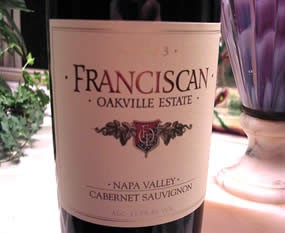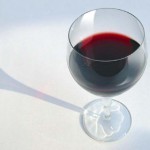It may seem odd , but this fine summer day we’re going to examine the qualities of Port - that sweet Portuguese nectar which is usually consumed after a hearty meal or by a roaring fire to ward off the chill of winter. Why? Well, the other night after a special meal on the patio, I decided to open a tawny port to complete this lovely evening. As I sipped and enjoyed a relatively inexpensive version of this sometimes very expensive wine, I was inspired to tell you about the pleasures of Port. So
today, we’ll look at the wonderful world of port.
First a little history lesson. Back in the 1700s, the English dearly loved the wines of Bordeaux, but because of their constant wars with the French, our British cousins were forced to look to Portugal for vinous sustenance. As they began to import red wine from Portugal, some enterprising folks added brandy to the barrels so the wines would be fortified to survive the arduous sea journey.
The practice of “fortifying” the wine was refined by the Portuguese wine makers who began to add distilled spirits to their wine during fermentation. This had the effect of stopping the fermentation and leaving the wines sweet. It also made the wines higher in alcohol. The British loved the sweet, high alcohol wines and the Portuguese were more than happy for the significant trade that ensued. Since that time, port has been exported all over the world and has become the staple after dinner drink for many wine lovers.
Some would suggest that port, like scotch, is an acquired taste. I can assure you that, from my perspective, port is a lot easier to enjoy than Scotch. True, there is a “baked” quality to the taste of this sweet wine that some folks take a while getting accustomed to, but once you try the stuff with a good blue cheese or a handful of walnuts, you’ll be hooked.
Port or 'porto' (as it is called in Portugal) is made from a variety of (unpronounceable) grapes grown along the steep slopes of Douro River. The river flows toward the town of Oporto, where the wine is sold to companies (called” Shippers”) who age it, label it under their house name and then export it all over the world.
Port is fortified which means that distilled spirits are added to the fermenting wine. This causes the fermentation to stop, leaving about 10 percent residual sugar in the wine and also boosting the alcohol to about 20 percent. At first, port was produced in a dry style, but the British changed all that and, in fact, many port producers today are English companies.
There are also some very good port-style wines produced in other countries, most notably Australia and the U.S. As a matter of fact, two of my favorite tawny ports are produced in these two countries and I’ll list them for you later.
SORTS OF PORT
Here are different styles of Port available in the marketplace:
Vintage Port: This is the best and most expensive style and is produced on average in only three years a decade. A “vintage year” is usually declared by an agreement among the shippers and the wines are then given special care and aging. Once you buy it, vintage Port can age easily for 15 to 40 years before reaching maturity. Recent vintage Port years are 1977, 1979, 1983, 1986, 1991 and 1994, 1995, 1997 2000 and 2003.
Late Bottled Vintage Port: Not to be confused with vintage port, this wine is a blend of ports from different vineyards in the same vintage year. Late bottled vintage port (or LBV) will have a vintage date on the label, but it is not vintage port. However, these wines are vinified in the same manner as vintage ports, except they are aged in barrel longer to accelerate their drinkablity.
Ruby Port: Young port wine blends from several different vintages comprise ruby port. They are lighter and fruitier than other styles and usually the least expensive ports.
Tawny Port: I call this 'the poor man’s vintage port' because it is aged for many years in oak and, when released, it is very smooth and rich like an old vintage port, though not as fine. Without a doubt, this is my favorite everyday drinking port. Most of the better tawnies are aged for either 10, 20, 30 or 40 years and this fact is listed on the label. Tawnies, without these label designations are usually less appealing.
White Port: Made from white grapes, this is the only port-style wine that is dry. It is usually crisp, yet full-bodied, and makes a nice aperitif wine.
RECOMMENDATIONS
Okay, here is a list of some of my favorite port producers: Ficklin and Quaddy (U.S.) and Clocktower (Australia) are my favorite port-like wines produced outside Portugal. The rest of these producers are Portuguese: Warre’s, Graham’s, Taylor-Fladgate, Croft, Dow’s, Fonseca and Ramos-Pinto. Prices for 10-year old tawnies can range from about $10 to $25 dollars a bottle. If you can find it, try Ficklin’s 10-year old tawny – it’s absolutely delicious.




